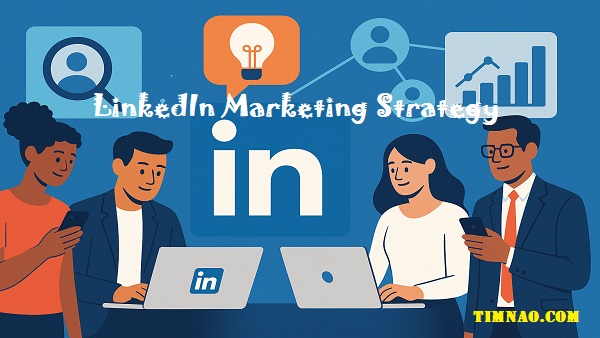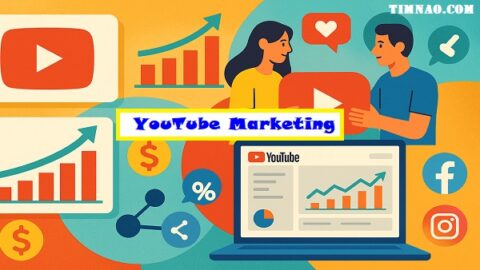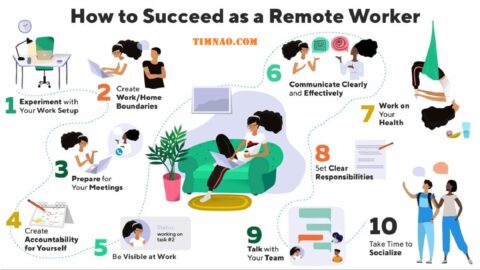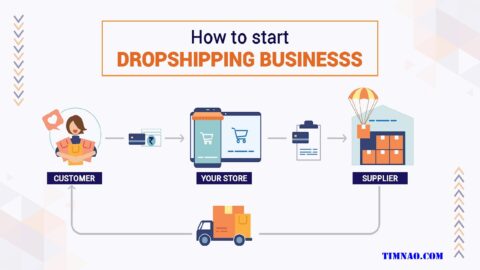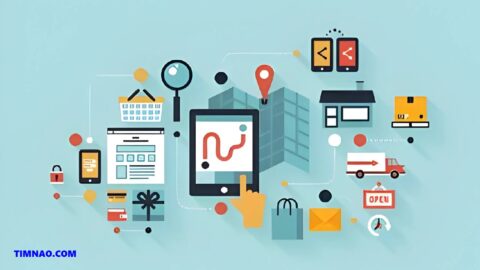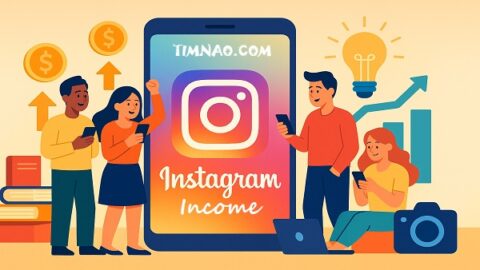LinkedIn Marketing Strategy: 10X Your Reach with Our Amazing 2025 Guide!
LinkedIn Marketing Strategy is no longer just a buzzword; it’s an indispensable component of any robust digital marketing plan, especially for B2B businesses and professionals looking to elevate their brand. If you’ve ever wondered how to truly harness the power of LinkedIn, you’re in the right place. This platform has evolved far beyond a simple online resume repository. It’s a dynamic ecosystem for networking, brand building, lead generation, and establishing thought leadership.
This comprehensive guide will walk you through everything you need to know to create an unstoppable LinkedIn Marketing Strategy. We’ll cover optimizing your personal presence, leveraging business pages, creating compelling content, and even touch upon the latest features and advertising opportunities that can significantly amplify your results. Whether you’re a beginner just starting or looking to refine your existing approach, these insights will help you navigate LinkedIn with confidence and achieve remarkable growth.
Mastering Your Personal Brand on LinkedIn: Your Foundation for Success ✨
Before diving into business promotion, your personal LinkedIn profile is where your LinkedIn Marketing Strategy begins. It’s your digital handshake, your online reputation, and often the first impression you make on potential clients, employers, or collaborators.
Crafting an Irresistible Online Resume & Profile
Your LinkedIn profile is a dynamic, digital version of your resume, but it offers so much more interactivity and depth. Recruiters and HR professionals actively use LinkedIn to find talent. In fact, not being on LinkedIn can sometimes be a red flag.
Key elements for a powerful LinkedIn profile in 2025:
-
Professional Profile Photo & Background Image:
- Profile Photo: Use a high-quality, recent headshot where you look approachable and professional. Avoid selfies, group photos, or distracting backgrounds. LinkedIn states profiles with photos get up to 21 times more views.
- Background Photo: This is prime real estate! Use a custom banner that reflects your personal brand, industry, expertise, or company. Ensure it’s visually appealing and complements your profile photo. Consider tools like Canva for easy creation.
-
Compelling Headline: This is more than just your job title. Your headline (below your name) is highly searchable and should immediately convey your value proposition. Use keywords relevant to your field and what you offer. Instead of “Marketing Manager at Company X,” try “Strategic Marketing Leader Driving Growth for SaaS | SEO & Content Expert | LinkedIn Marketing Strategy Enthusiast.”
-
Engaging “About” Section (Summary):
- This is your story. Write in the first person and let your personality shine through, while maintaining professionalism.
- Clearly articulate who you are, what you do, who you help, and how you provide value.
- Incorporate relevant keywords naturally. Think about what terms someone would search for to find a professional like you.
- Latest Tip: LinkedIn’s AI writing assistant can help draft this, but always personalize it to make it sound authentic and human. Use it as a starting point, not the final version.
- Add a call to action: What do you want people to do after reading your summary? (e.g., “Feel free to connect,” “Check out my portfolio link below.”)
-
Detailed Experience Section:
- Don’t just list job titles and dates. For each role, describe your responsibilities and, more importantly, your achievements. Use bullet points with action verbs and quantify your accomplishments whenever possible (e.g., “Increased lead generation by 30% through targeted LinkedIn campaigns”).
- Add rich media like project links, presentations, or videos if relevant to showcase your work.
-
Skills & Endorsements:
- List at least 5-10 key skills relevant to your profession. LinkedIn will prompt your connections to endorse these skills, adding social proof.
- You can reorder your skills to highlight the most important ones at the top.
- Latest Trend: Focus on a mix of hard skills (e.g., “Java Development,” “Financial Analysis”) and soft skills (e.g., “Leadership,” “Communication”).
-
Recommendations: The Gold Standard of Social Proof:
- Recommendations are written testimonials from your connections (colleagues, clients, managers) that attest to your skills and work ethic. These are incredibly valuable.
- Don’t be shy about asking for recommendations from people who know your work well. Personalize your requests.
- Offer to write recommendations for others; it’s a great way to build goodwill and often leads to reciprocation.
-
Featured Section: This is perfect for showcasing your best work. Pin your most popular articles, links to your portfolio, important posts, or company announcements here.
-
Licenses & Certifications, Volunteer Experience, Accomplishments:
- Fill out these sections to provide a holistic view of your expertise and character. Listing volunteer work can show you’re community-minded.
-
Custom URL: Personalize your LinkedIn profile URL (e.g.,
linkedin.com/in/yourname) to make it professional and easy to share. -
Creator Mode (Consider if you create content regularly):
- Latest Feature: If you actively post content, enabling Creator Mode can help you build a following. It changes your “Connect” button to “Follow” and allows you to specify topics you talk about (hashtags). It also gives you access to more analytics and tools like LinkedIn Live and Newsletters.
Keeping Your Profile Fresh: Remember to regularly update your profile as your career evolves.
The Power of Networking: Building Meaningful Connections
LinkedIn is fundamentally about connections. A strong LinkedIn Marketing Strategy relies on a robust and relevant network.
- Strategic Connecting: Don’t just collect connections. Focus on quality over quantity. Connect with industry peers, thought leaders, potential clients, past colleagues, and alumni.
- Personalize Invitations: When sending a connection request, always add a personalized note explaining why you want to connect. This significantly increases acceptance rates.
- Engage with Your Network: Don’t just connect and forget. Like, comment, and share relevant content from your connections. Congratulate them on work anniversaries or new roles.
- Utilize LinkedIn Messages: LinkedIn Messages are a powerful tool for direct communication. Use them to follow up, share insights, or ask for advice. Avoid spammy sales pitches. LinkedIn Premium users might have more InMail credits to message people outside their direct connections.
- Join Relevant Groups: LinkedIn Groups allow you to connect with like-minded professionals in your niche. Participate in discussions, share your expertise, and ask questions. This can be a great way to learn and expand your network.
Supercharging Your Business with LinkedIn Pages: Your Brand’s Professional Hub 🚀
While your personal profile is crucial, a LinkedIn Company Page is essential for your overall LinkedIn Marketing Strategy if you’re promoting a business. It’s the official voice of your brand on the platform.
Why Your Business Absolutely Needs a LinkedIn Page
A LinkedIn Page offers numerous benefits:
- Brand Awareness & Visibility: Increases your business’s visibility on LinkedIn and in search engine results.
- Lead Generation: Drive traffic to your website and generate leads.
- Talent Acquisition: Share job openings and attract top talent. Your page gives candidates a place to learn about your company culture.
- Content Distribution: Share company news, blog posts, industry insights, and product updates directly with your followers.
- Community Engagement: Interact with your audience, answer questions, and build a loyal community around your brand.
- Showcase Expertise: Position your company as a thought leader in your industry.
Creating and Optimizing Your LinkedIn Company Page for Maximum Impact
Setting up a Company Page is straightforward, but optimizing it requires attention to detail.
-
Complete All Page Sections:
- Logo & Cover Image: Use a high-resolution logo and a compelling cover image that represents your brand identity.
- Overview/About Us: Clearly describe what your company does, its mission, vision, values, and what makes it unique. Use keywords your target audience might search for.
- Website URL, Industry, Company Size, Type, Location: Ensure all information is accurate and up-to-date.
- Tagline: A concise and impactful description of your company (120 characters).
- Custom Button: Add a call-to-action button like “Visit website,” “Learn more,” or “Contact us.”
-
Strategic Content:
- Regularly post valuable and relevant content. This could include company updates, product news, blog articles, industry reports, case studies, employee spotlights, and behind-the-scenes glimpses.
- Aim for a mix of content formats: text posts, images, videos, documents (like PDFs of whitepapers), and LinkedIn Articles.
- Latest Trend: Video content performs exceptionally well on LinkedIn. Consider short, informative videos, interviews, or product demos. LinkedIn Live is also powerful for real-time engagement.
- Use relevant hashtags (3-5 per post is a good rule of thumb) to increase discoverability.
-
Encourage Employee Advocacy:
- Your employees are your biggest advocates. Encourage them to connect their profiles to the Company Page and share company content with their networks.
- Feature employees and celebrate team achievements.
-
Engage with Your Audience:
- Respond to comments and messages promptly and professionally.
- Ask questions to encourage interaction.
- Run polls to gather opinions and spark discussions.
-
Showcase Pages (Now “Affiliated Pages” or part of Product Pages logic):
- Originally, Showcase Pages were used to highlight specific product lines, brands, or initiatives. The functionality has evolved. Now, you might create specific Product Pages directly from your Company Page to detail offerings. These allow for rich descriptions, media, and customer reviews. Ensure these are listed under your main page for cohesive branding. Check LinkedIn’s latest “Work” menu options for how they currently structure these distinct offerings.
-
LinkedIn Events: Promote webinars, workshops, or conferences directly through your page.
-
Analyze Your Performance: Use LinkedIn Page analytics to understand what content resonates with your audience, track follower growth, and measure engagement. Adapt your strategy based on these insights.
Leveraging LinkedIn Groups for Business
While individuals join groups for personal networking, businesses can also benefit from creating or participating in LinkedIn Groups as part of their LinkedIn Marketing Strategy.
- Establishing Thought Leadership: By creating a group focused on your industry or niche, you can position your brand as a central hub for information and discussion.
- Community Building: Foster a community around shared interests related to your business.
- Customer Insights: Gain valuable feedback and understand the pain points of your target audience by observing discussions.
- Subtle Promotion: While overt selling is generally discouraged in groups, you can subtly guide members to your resources when relevant.
Tips for Successful Group Management:
- Define clear group rules and moderate discussions.
- Encourage active participation by posing questions and initiating discussions.
- Share valuable content (not just your own).
- Appoint moderators if the group grows large.
- Pin important posts or discussions to the top.
Dominating with a Winning LinkedIn Content Strategy: Engage, Educate, Convert 💡
Content is king, even on LinkedIn. A powerful LinkedIn Marketing Strategy hinges on consistently creating and sharing valuable content that resonates with your target audience.
Why LinkedIn is a Unique Content Platform
Publishing content on LinkedIn, whether through personal profiles (Articles) or Company Pages (posts), offers distinct advantages:
- Reach a Professional Audience: Your content is seen by a network focused on business and career development.
- Boost Visibility: Articles can appear on your profile, and posts from your Company Page reach your followers. Engagement can expand reach to their networks too.
- Establish Expertise: Sharing insightful content helps position you and your business as thought leaders.
- Drive Engagement: LinkedIn’s algorithm favors content that sparks conversations.
Types of Content That Thrive on LinkedIn in 2025:
-
LinkedIn Articles (for Personal Profiles & Thought Leadership):
- These are long-form posts, similar to blog posts, published directly on LinkedIn via your personal profile.
- Ideal for sharing deep insights, industry analysis, personal experiences, and thought leadership pieces.
- Use a compelling title, engaging visuals (cover image, embedded images/videos), and clear formatting (headings, bullet points).
- Latest Tip: LinkedIn Newsletter functionality allows your followers to subscribe to your regular articles, increasing readership.
-
Short-Form Posts (Personal Profiles & Company Pages):
- These are the everyday updates you see in the feed.
- Text-Only Posts: Can be surprisingly effective, especially for storytelling, posing questions, or sharing quick insights.
- Image Posts: Use high-quality, relevant images. Infographics, charts, and quote graphics perform well.
- Video Posts: Native video (uploaded directly to LinkedIn) gets preferential treatment. Keep videos concise and engaging, with captions (as many watch with sound off).
- Document Posts (PDFs, Slides): Sharing presentations, whitepapers, or case studies as a carousel document can be very engaging as users can swipe through.
- Polls: A great way to boost engagement and gather quick opinions.
- Celebrations & Milestones: Share team successes, work anniversaries, or company achievements.
-
LinkedIn Live: Real-time video broadcasting for interviews, Q&As, product demos, or events. Requires application/approval or meeting certain criteria (like having Creator Mode and a certain number of followers).
-
Collaborative Articles (Latest Feature):
- LinkedIn is pushing “Collaborative Articles” where they pose questions on various skills and invite experts (often identified by LinkedIn) to contribute their perspectives. Getting your contributions featured can significantly boost your visibility and credibility. Engage with these by adding valuable insights if you get invited or see relevant ones in your feed.
Best Practices for LinkedIn Content Creation:
- Know Your Audience: Create content that addresses their pain points, interests, and aspirations.
- Provide Value: Focus on educating, informing, or inspiring your audience rather than just selling.
- Be Consistent: Establish a regular posting schedule. Whether it’s daily or a few times a week, consistency is key.
- Optimize for Readability: Use clear language, short paragraphs, bullet points, and emojis (sparingly and appropriately) to break up text.
- Use Relevant Hashtags: Research and use a mix of broad and niche hashtags to increase discoverability. Aim for 3-5 well-chosen hashtags.
- Encourage Engagement: Ask questions, respond to comments, and foster discussions around your content.
- Cross-Promote (Wisely): Share your LinkedIn content on other platforms and in your email signature, but tailor the message for each platform.
- Analyze and Adapt: Pay attention to your analytics to see what types of content perform best and adjust your strategy accordingly.
Exploring LinkedIn Advertising: Reaching Your Ideal Audience with Precision 🎯
While organic reach is powerful, a comprehensive LinkedIn Marketing Strategy in 2025 should also consider LinkedIn Ads for targeted campaigns. LinkedIn’s advertising platform offers sophisticated targeting options, making it highly effective for B2B marketers.
Why Consider LinkedIn Ads?
- Precise Targeting: Target users based on job title, industry, company size, skills, seniority level, education, location, and more. This granularity is unmatched for B2B.
- High-Quality Leads: Because of the professional nature of the platform and its targeting, leads generated from LinkedIn are often of higher quality.
- Variety of Ad Formats:
- Sponsored Content: Promote your best-performing posts directly in the LinkedIn feed.
- Sponsored Messaging (formerly Sponsored InMail): Deliver personalized messages directly to your target audience’s LinkedIn inbox. (Use with caution to avoid being spammy).
- Text Ads: Simple, budget-friendly ads that appear on the side or top of the LinkedIn feed.
- Dynamic Ads: Personalize ads using members’ profile data (e.g., “Congratulate [Name] on their work anniversary”).
- Lead Gen Forms: Simplify lead collection by pre-filling forms with users’ LinkedIn profile data.
- Measurable Results: Track campaign performance, CPL (Cost Per Lead), CTR (Click-Through Rate), and conversion rates to optimize your ad spend.
Tips for Effective LinkedIn Advertising:
- Define Clear Objectives: What do you want to achieve (brand awareness, lead generation, website traffic)?
- Know Your Target Audience: Use LinkedIn’s detailed targeting options to reach the right people.
- Craft Compelling Ad Copy & Creatives: Your ad needs to grab attention and offer clear value.
- A/B Test Your Ads: Experiment with different headlines, images, CTAs, and targeting parameters to find what works best.
- Set a Realistic Budget: LinkedIn Ads can be more expensive than other platforms, so plan your budget carefully.
- Monitor and Optimize: Continuously track your campaign performance and make adjustments to improve results.
Understanding LinkedIn Analytics & New Features: Staying Ahead of the Curve 📊
To ensure your LinkedIn Marketing Strategy is effective, you need to pay attention to analytics. Additionally, LinkedIn is constantly evolving, so staying updated on new features is crucial.
Key LinkedIn Analytics to Track:
- Personal Profile Analytics:
- Who’s Viewed Your Profile: See who’s checking you out (some views may be anonymous depending on their settings and yours).
- Post Views & Engagement: Track views, likes, comments, and shares on your posts.
- Search Appearances: See how often you appear in search results and the keywords people used.
- Company Page Analytics:
- Follower Demographics & Growth: Understand who your followers are and how your follower base is growing.
- Update Engagement: Track reach, impressions, clicks, likes, comments, shares, and engagement rate for each post.
- Visitor Demographics: Learn about the professionals visiting your page.
- Lead Gen Form Performance: (If using ads) Track leads generated.
- LinkedIn Article Analytics: Views, likes, comments, shares, and sometimes demographic insights about readers.
Notable Recent LinkedIn Features for Marketers (as of early 2025):
- AI-Powered Tools: LinkedIn is increasingly integrating AI, from content suggestions for profiles and posts to AI assistance in recruitment and sales outreach. Keep an eye on how these tools can streamline your efforts.
- Enhanced Creator Mode: More tools and analytics for content creators, including improved newsletter functionality and options for audio events (similar to Clubhouse).
- Video & Live Streaming Improvements: Continued investment in video capabilities, including more interactive features for LinkedIn Live.
- Focus on Skills: Greater emphasis on skills for career development and hiring, with more detailed skill assessments and learning paths integrated with LinkedIn Learning.
- Collaborative Tools: Features that encourage interaction and co-creation, like the aforementioned Collaborative Articles.
- Accessibility Features: Ongoing improvements to make the platform more accessible to all users.
Staying informed about these changes by following LinkedIn’s official blog and industry news sites will give you a competitive edge.
Conclusion: Your Journey to LinkedIn Marketing Mastery
An effective LinkedIn Marketing Strategy is a marathon, not a sprint. It requires consistent effort, a willingness to adapt, and a genuine desire to provide value to your network and audience. By implementing the strategies outlined in this guide – from meticulously crafting your personal and company profiles to creating compelling content and leveraging LinkedIn’s advanced features – you can transform your LinkedIn presence from a passive placeholder into a powerful engine for professional growth, brand building, and business success.
Start today. Optimize that profile, schedule that first engaging post, reach out to a new connection, and begin your journey to mastering the incredible potential of LinkedIn marketing in 2025 and beyond!
Reference video:

